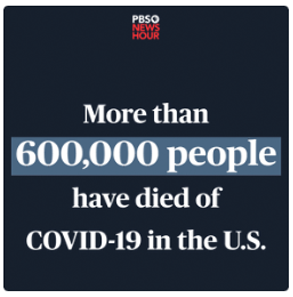Radar on Medicare Advantage
-
Investor Day Roundup: Centene, CVS, United See Promise of Duals Market in 2024 and Beyond
While major Medicare Advantage insurers are bracing for potential revenue reductions stemming from upcoming changes to the risk adjustment model, three insurers presenting at their recent investor conferences appeared bullish on the prospect of continued growth in MA, and in particular, the sizable opportunity to serve people who are dually eligible for Medicare and Medicaid. According to a recent analysis from AIS’s Directory of Health Plans, roughly 5.6 million out of an estimated 13 million dual eligibles in the U.S. are enrolled in a Dual Eligible Special Needs Plan (D-SNP).
Although managed Medicaid and the exchanges remain its No. 1 and 2 revenue drivers, Centene Corp.’s MA business — which has a large concentration of D-SNP members — will be an “important growth driver for Centene long term,” CEO Sarah London told investors on Dec. 12.

-
2023 Year in Review: Top Medicare Advantage Payers by Enrollment
Nearly 32 million people were enrolled in Medicare Advantage plans as of December 2023, up from about 29.5 million in December 2022, according to AIS’s Directory of Health Plans. And while the six national carriers led by UnitedHealthcare currently enroll 69.8% of the market, regional Blues affiliates, provider-sponsored payers and other locally focused insurers have largely continued to grow alongside them. Tech-enabled startup insurers, meanwhile, saw some of the most explosive gains — and losses — in 2023. See the year-end enrollment wrap-up in the graphics below.
-
Study: Quartile System Used to Adjust MA Plan Pay Led to $46.7B in Extra Payments
While lawmakers continue to point fingers at risk adjustment and coding practices in Medicare Advantage for increasing plan payments relative to traditional fee-for-service (FFS) Medicare, a new analysis published in JAMA puts a spotlight on the “intended payment differences” created by the quartile structure currently used to set MA payment benchmarks. The Medicare Payment Advisory Commission (MedPAC) has previously recommended replacing the four-tiered system and “rebalancing” MA pay. Researchers now estimate that this system has generated an additional $46.7 billion in additional payments to MA plans, which could fuel the desire of progressive lawmakers to overhaul how MA plans are paid.
Established by the Affordable Care Act, the quartile system pays plans more for serving counties with the lowest FFS spending by applying a statutorily determined percentage to the per capita FFS estimates of spending for each county. The adjustments range from 95% for the highest-spending counties to 115% for the lowest-spending counties. Benchmarks are calculated before plans submit their bids and are also adjusted based on a plan’s Star Rating.

-
News Briefs: DOJ Seeks Transfer or Dismissal of Humana Case Challenging RADV Extrapolation
The Dept. of Justice on Dec. 15 filed a motion to transfer or dismiss Humana Inc.’s case against the federal government and its use of extrapolation in Risk Adjustment Data Validation (RADV) audits of Medicare Advantage insurers. After CMS in January finalized plans to begin extrapolating RADV audit findings in recovering improper payments starting with payment year 2018, Humana on Sept. 1 filed a lawsuit asking the U.S. District Court for the Northern District of Texas to vacate the rule and therefore stop CMS from applying its new audit policy. By excluding a “fee-for-service adjuster” that the agency had once promised would be used in the audits, the RADV audits “do not observe any actuarial standards at all,” the MA insurer argued in Humana Inc. et al v. Becerra et al (No. 4:23-cv-909-O). In its response filed in the Fort Worth division of the District Court, HHS argued that Humana hasn’t been harmed because CMS has not begun any audits under the challenged rule. Moreover, there is no certainty that Humana will be subject to audits under the new rule because CMS hasn’t “chosen the contracts to be audited under the rule for any payment year, nor selected a statistical sampling and extrapolation methodology for any such audits,” stated the response, which was obtained and posted by STAT.
-
Rumored ‘Cigmana’ Combo Presents MA Overlap, PBM Concerns
Just a few weeks after reports surfaced that The Cigna Group was looking to offload its Medicare Advantage business, reports emerged of a possible transaction with Humana Inc. that would create a diversified health insurance giant in the same weight class as CVS Health Corp. and UnitedHealth Group. Wall Street analysts agreed such a deal would invite scrutiny from regulators, partly because of Cigna’s substantial MA overlap with Humana, although multistate Blues insurer Health Care Service Corp. (HCSC) is reportedly interested in picking up Cigna’s MA book. To complete the square dance, rumors have also resurfaced of Walmart’s interest in purchasing Humana.
Reuters on Nov. 6 first reported that Cigna was exploring a sale of its MA business, which represents about 3% of its overall medical membership. Sources told the news outlet that the insurer was working with an investment bank to evaluate its options and that the potential sale could bring in several billions of dollars. Analysts at the time suspected that the move was an effort to preempt the intense antitrust scrutiny Cigna might face if it sought to merge with a government-focused firm such as Humana or Centene Corp.












